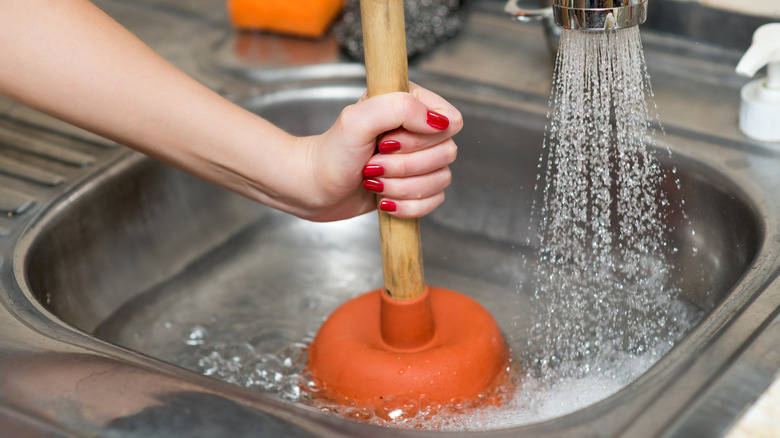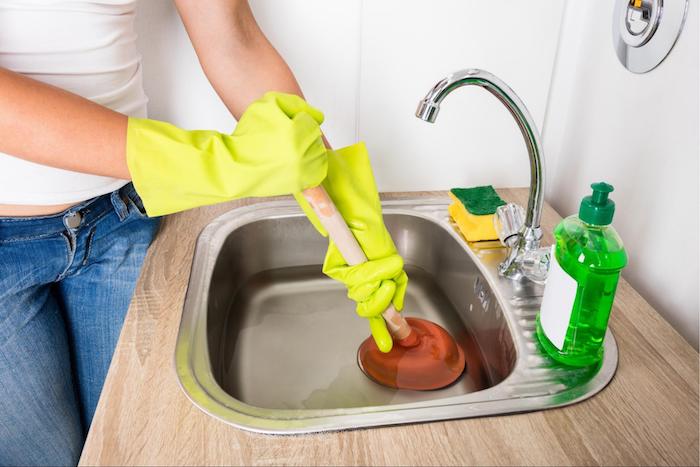What're your opinions about How to Fix a Slow Draining Sink?

Introduction
We have actually all existed: You're cleaning your teeth or washing your hands, and you discover the water pooling in the sink. Instead of rapidly swirling down the tubes, it lingers, transforming your once-refreshing morning regimen right into a mini overload scene. A slow-draining sink isn't just frustrating; it's often an indication of bigger pipes problems hiding under the surface area. The bright side is that a lot of slow-draining sinks can be taken care of with a little know-how, a few basic devices, and some perseverance. Prepared to tackle this job head-on? Let's roll up our sleeves and dive right in.
Understanding the Causes of a Slow-Draining Sink
Before you start poking around in your pipes, it helps to understand what might be causing the downturn. Recognizing the root cause makes it less complicated to pick the right solution.
Tools and Products You'll Need
The right devices make all the difference. The good news is, you will not need a completely equipped plumbing technician's van to get the job done.
Step-by-Step Guide to Repairing a Slow-Draining Sink
Currently, allow's enter into the nitty-gritty. This step-by-step process will certainly direct you via easy techniques to restore your sink's water drainage.
Action 1: Eliminate and Clean the Stopper
Commonly, the stopper (that tiny plug you lower to obstruct water) is the initial culprit. Remove it carefully and clean off any kind of hair or gunk trapped around its base. Rinse it thoroughly before putting it back in position.
Action 2: Use a Bettor to Displace Particles
Got that bettor prepared? Setting it over the drainpipe and offer it a few company pumps. The concept is to create suction that can loosen any kind of blockage. If you see littles particles drifting up, you get on the best track.
Step 3: Try a Drain Snake or Wire Hanger
If the bettor doesn't do the trick, it's time to highlight the drain snake. Gently feed it right into the drainpipe and spin as you go. You could really feel some resistance-- that's most likely the clog. Keep turning and drawing until you remove the obstruction. If you don't have a drain serpent, a straightened wire hanger can operate in a pinch.
Tip 4: Apply a Do It Yourself Drain Cleanser
An all-natural cleaner made from cooking soft drink and vinegar can break down recurring gunk. Pour half a cup of cooking soda into the drainpipe, followed by half a cup of vinegar. Allow it fizz for about 15 minutes, after that flush with warm water. This chain reaction commonly does wonders for small clogs.
Tip 5: Reassemble and Evaluate the Sink
Placed everything back together and run the faucet. Does the water now swirl down the tubes at a respectable rate? If yes, provide yourself a pat on the back. Otherwise, don't anguish-- there are still a few even more tricks up your sleeve.
Crucial Tools for DIY Services
A plunger is your best beginning factor. A tiny, sink-sized plunger develops suction that can dislodge minor obstructions. For more relentless clogs, a drainpipe snake (sometimes called a plumber's auger) functions wonders. A pair of handwear covers, a flashlight, and possibly a pair of protective safety glasses are also convenient.
Recommended Cleansing Solutions
Mild recipe soap and hot water can help break down oily build-up. A combination of cooking soft drink and vinegar is a tried and true natural home remedy, and chemical cleansers offer a more eco-friendly method. Keep chemical drain cleaners as a last resort, as they can be harsh on your pipelines.
Common Perpetrators Behind Slow Drainage
So, what's blocking points up? Normally, it's a mix of day-to-day particles-- believe hair, soap scum, tooth paste deposit, and remaining food fragments. Over time, these tiny bits gather and hold on to the pipeline wall surfaces, gradually narrowing the passage and making it harder for water to pass through. In some cases, mineral deposits from difficult water can also add to the crud, creating the ideal tornado for stubborn blockages.
When is it Time to Take Action?
If you notice the water draining slower than usual, it's a great idea to intervene sooner rather than later on. Waiting also long might cause finish obstructions, unpleasant smells, and even pipe damage. If the water takes greater than a couple of secs to clean out after shutting off the faucet, consider it a warning and prepare yourself to place on your do it yourself hat.
Safety And Security First: Safety Measures and Prep work
Prior to you launch into unclogging mode, consider safety. You're handling possibly unclean water and debris, so slip on a set of handwear covers. If you're utilizing chemical cleaners, make certain the area is well-ventilated and follow the instructions on the tag.
Protective Equipment and Office Configuration
Put down some old towels or cloths around the sink location to catch dashes. Clear away any products that might enter your means, like soap dispensers or tooth brush holders. Make certain you have great illumination-- get a flashlight if needed.
Alternate Approaches for Stubborn Clogs
Not all clogs are developed equal. If your sink still declines to work together, consider these different solutions.
Baking Soda and Vinegar Method
We currently discussed this, however it's worth noting once again. This mild, environment-friendly approach is safer than chemical cleaners and commonly rather effective.
Chemical Drainpipe Cleansers
Enzyme-based cleaners use all-natural bacteria to digest raw material. They're an exceptional choice if you're looking to stay clear of rough chemicals. Simply bear in mind, they might take a bit longer to function their magic.
Chemical Drainpipe Cleaners: Advantages And Disadvantages
Chemical cleaners can blast through tough blockages quick, but they're not without disadvantages. They can produce warm and fumes, damage pipes if made use of excessively, and present ecological risks. Use them moderately, and always adhere to the instructions thoroughly.
Preventive Measures to Maintain Your Sink Flowing
Avoidance is the very best cure. By embracing a few simple routines, you can keep your sink from decreasing in the first place.
Routine Cleaning Up Habits
Clean down the sink container and fixture location frequently. Remove hair or food bits before they have a chance to wash down the drain.
Avoiding Harmful Substances Down the Drain
Think twice before dumping coffee grounds, oil, or coarse vegetable scraps down the sink. These culprits cling to pipeline walls, developing clogs over time.
Routine Maintenance Checks
Schedule a fast regular monthly examination. Run hot water via the sink for a few mins, paying attention to the flow. If it appears sluggish, act quickly before it ends up being a full-on obstruction.
When to Call an Expert Plumbing
Sometimes, regardless of exactly how difficult you attempt, that clog just won't budge. That's when it's time to generate the pros.
Indicators That Indicate a More Significant Issue
If your sink drains pipes gradually in spite of several efforts, or if you discover water backing up in various other fixtures (like your shower or commode), you may have an extra serious plumbing issue lurking much deeper in the system.
Balancing DIY Initiatives with Specialist Aid
While DIY can save you cash and offer a sense of achievement, there's no pity in calling an expert. A specialist plumber can examine your whole plumbing setup, guaranteeing there's no underlying damages or long-lasting trouble that could cost you more down the road.
Contrasting Costs and Long-Term Solutions
Prior to making a decision, take into consideration the big picture. A low-cost, quick fix might resolve the issue temporarily, yet purchasing a more permanent remedy might save you money and stress and anxiety over time.
Weighing the Expenses of DIY vs. Specialist Repairs
Do it yourself fixes often set you back little bit more than the price of a plunger or a container of baking soft drink. Specialist solutions, on the other hand, featured a price however may prevent repeated problems and pricey repair work later.
Buying High Quality Fixtures and Upgrades
If your sink's design contributes to frequent clogs, it could be worth updating to higher-quality fixtures or altering the pipes design. Consider this a financial investment in your house's functionality and convenience.
Verdict
A slow-draining sink can seem like a minor inflammation, yet it's typically an indicator that your plumbing requires a little tender loving care. By comprehending the origin, using the right devices and strategies, and dedicating to easy safety nets, you can keep your sink flowing freely. And when all else falls short, never think twice to call in an expert-- your home's plumbing is worth the financial investment in treatment and upkeep.
Three Common Ways to Fix a Slow Drain
Baking Soda Method
Boil a full pot of water. Measure out cup of baking soda and pour it down the drain. Then take cup of the magical cleansing substance known as white vinegar and drop that down there too. Allow the mixture to fizz in the drain for five minutes as the vinegar and baking soda combine. Now dump in that whole pot of boiling water. This combination of cleaning substances should clear out anything that is causing your sink to drain slowly. If it doesn t...
Zip-It
If the baking soda method doesn t clear out your drain, it may be because a significant amount of hair and/or other debris has collected there and you need to remove it. Purchase a Zip-It tool at any home improvement or hardware store and insert it into your drain. It will catch any collected hair or debris that s blocking the flow of water. Pull it out. If it s got a big clump of hair, etc. on the end, you ve probably got your culprit.
Drain Cleaner
If these methods don t work, there is the standard drain cleaner that you can also buy in a hardware store or even your local grocery store. It s better if you can use a household solution, but these drain cleaners often work in a pinch. They re very simple to use. You generally just dump them in your drain and wait. If even this method is not effective, it may be time to call the plumber.
https://www.mrrooter.com/oneida/about-us/blog/2017/july/three-common-ways-to-fix-a-slow-drain/

Do you like reading up on Three Common Ways to Fix a Slow Drain? Try leaving feedback down the page. We will be glad to hear your insights about this write-up. In hopes that you come back again later on. So long as you enjoyed our blog post if you please make sure you remember to share it. I love your readership.
Website
 Ralph Macchio Then & Now!
Ralph Macchio Then & Now! Tony Danza Then & Now!
Tony Danza Then & Now! Elin Nordegren Then & Now!
Elin Nordegren Then & Now! Barbara Eden Then & Now!
Barbara Eden Then & Now! Naomi Grossman Then & Now!
Naomi Grossman Then & Now!